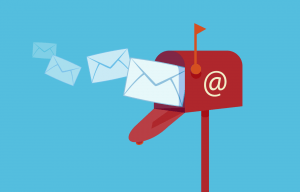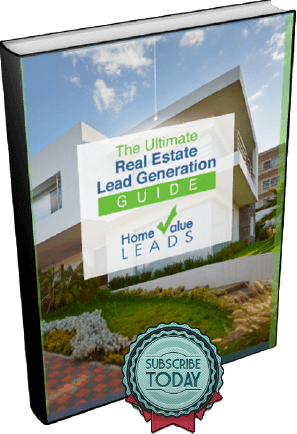
That’s a lot of emails that you could be missing out on! Here are a few tips to help you get started or back on track with your real estate newsletter campaigns.
Find the Purpose of Your Real Estate Newsletter
To get started with your real estate newsletter campaign, it’s important to drill down to what you want it to convey each and every time you send it out.
You don’t have to send out the same type of newsletter but should have a specific goal in mind with them. A lot of this comes down to who you are as a real estate agent and how you think you can help your audience.
Learn how to get seller leads with our home valuation landing pages
Some goals include:
- Being the neighborhood expert
- Educating your audience
- Acting as a resource for all things real estate or home in your area
You might think that getting listings or selling properties is your main goal (and it certainly should be one), but, as with most real estate marketing, that is only a small part of the equation.
When you determine what the larger purpose of your newsletter is, then it becomes much easier to think of content ahead of time and to always bring consistent value to your audience.
Who Is Your Audience
The information you share is also contingent upon who your audience is. An easy way to segment your email list is by past clients and real estate leads.
Past clients would be more interested, for example in follow-up information to taking care of their homes or the latest events and information on the area.
They have already taken action through you to sell or buy a home, so information should mainly keep you top of mind for referrals and to remind them of your services to them.
In fact, your call to action should revolve around receiving referrals. Of course, it never hurts to remind them that you are there to help them if they are in the market to buy or sell again.
On the flip side, real estate leads might enjoy information that relates more to staging a home, tips for open houses, market statistics and the like.
You can certainly share statistics, too, with past clients, but that might not be the main focus for that segment.
Any information that you can provide to leads to get them interested in following through on selling or buying a home will go a longer way and continue the process towards converting them into clients.
Include Great Content
A lot of agents struggle with what content to include in a real estate newsletter.
If you are just starting out, you can keep it really simple by only including one vital piece of information, like a market stats report, open houses you will be holding in the near future (include a great intro to keep it less sale-sy) or a simple guide on any aspect of the home selling or buying process.
As you get more seasoned in developing your newsletters, you can then add more sections, such as homes your are selling, testimonials, success stories and answering common client questions.
Notice these are also great topics to include in your blog. You can create blog posts around specific topics then link to them in your newsletter.
Including the same image from your blog and an excerpt with a “Read More” button in your newsletter will bring people back to your website where your clients and leads can continue to learn more about you and your real estate expertise.
And, if you create your landing pages or blog posts just right, this will lead to more client conversions.
Determine a Schedule that Works
We all get busy in the day-to-day, but if you don’t want to miss out on the benefits of sending out a real estate newsletter, you must incorporate it into your marketing schedule.
Start out with a newsletter once a month to your leads, for example, and every two months to your past clients.
This should give you enough time to pre-plan and collect the info or data you need to populate your newsletters.
Writing out a schedule in a simple spreadsheet is a great way to keep track of topics to cover as well as keep your newsletters relevant to the season and holidays.
Take an hour or two to determine what your year will look in newsletters. As you come across information that you believe is relevant to a particular newsletter, save that information in your spreadsheet to refer back to later.
